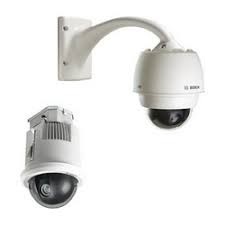Three Reasons Why Your Home Needs Data Cabling

Now that we have great wifi solutions for the home, you might think there aren’t many advantages to getting data cabling installed. There are still some good reasons to think about data cabling in a modern home.
For more information about data cabling on the Gold Coast, talk to TES Property Group.
Reason For Data Cabling One: Reliability and consistency
Have you experienced this, you’re watching Netflix (insert streaming service of choice if you’re not a Netflix subscriber) and suddenly if buffers. You think to yourself, it’s been working perfectly for months, why now?
That's a fairly common scenario. Wireless bandwidths are shared bandwidths and vagaries such as your neighbours' usage can affect your wifi.
Large metal objects can affect it. I know an incident that highlights this particularly well. A client of IT company Pogo moved his laptop to the other side of a bench of lost wifi. What he'd done was move closer to the fridge. When he moved a meter back away from the fridge his wifi returned.
Illegal use of bandwidth is possible also. We spoke to a communications regulator years ago and were told this is not uncommon. It was his job to find these culprits and he had many a story.
Or maybe your son is downloading a huge new file he just has to have.
Or your home wifi you might have sufficient speed to stream when there are ideal conditions. But you may perhaps only have 10% of the total bandwidth available. That is not uncommon. Let's say you're streaming 100Mbs into the house. At 10%, you're still getting 10Mbs so you're aware of the drop between home NBN connection and your device. Netflix will stream nicely on less than that. Until someone else in the home gobbles up a lot of bandwidth and your 10Mbs drops to 1Mbs.
A data cable into the back of your smart television will solve all that.
It's the same with online gaming. If you have a son (or daughter) who is complaining about lag destroying their gaming, then connect them via cable. We're well aware of how annoying teenagers can be when their gaming is compromised. A data cable can make those problems go away.
And of course the same applied to a home office. Zoom meetings, VPN connections, remote desktops...all depend on good connections to the internet.
Reason For Data Cabling Two: Better Wifi
This one sounds like a contradiction. But hear me out.
In many homes, the wifi doesn't reach one end of the home to the other properly. Perhaps you've installed an extender to improve the strength of the signal. But the extender loses speed with each hop. Even modern mesh wifi systems will lose speed with each hop. This means you might be getting a strong signal at the other end of the house but you're only getting half or a quarter of the speed.
The way to fix this is with data cabling. You can run a data cable directly to the auxiliary wifi units (whether they extenders or mesh wifi) and have them pumping out wifi at full volume.
If you're using a modern mesh system you might find that it supports POE (power over ethernet), meaning you don't have to power the wifi access point separately. This makes for a neat wifi installation without excess power cables hanging out. You can even use a in-wall wifi unit from TP Link or Unifi that mounts as a wall plate.

Reason For Data Cabling Three: Security Cameras
Security cameras are becoming more popular in the home these days. There are a number of smart solutions from Netgear, Google, Nest (etc...it's becoming a big list) as well as standard solutions that involve installing an NVR (network video recorder) and connecting digital cameras to it.
Both of these solutions have their advantages and disadvantages. We won't go into them here. If you are opting for security cameras, what doesn't change is the importance of network cabling.
First, if you're looking into smart cameras you can now get some that have wifi and batteries. These don't need cabling then? Yes, true. Except, see reasons One and Two. Moving data around wirelessly can impact the speed of the entire network. Also, these cameras tend to cost more and come with overheads such as the need to recharge them. A camera that is cabled will be more reliable.
You can also run most security cameras via POE. That means you're plugging directly into the network for data and you're powering the camera via the same connection. This is a much better solution than the old analogue cameras that required a video cable and a power cable separately.
In Summary
Whether you're running a home office and want a reliable connection, or you're wanting to avoid interruptions to your Netflix and chill, data cabling is still a great addition to your modern home. It'll provide speed, consistency and reliability. It can be used to grow and improve your wireless network. Or you can protect your home with security cameras.
SEARCH ARTICLES
Recent Posts
- Jul, 22, 2025
- May, 6, 2025
Diversity on Boards
- Apr, 11, 2025
When does asbestos become dangerous in your home?
- Jan, 23, 2025
How Design Aesthetics Shape Perceived Value
- Dec, 10, 2024
Impact of Inflation on First-Time Buyers
- Nov, 4, 2024
How to understand and check your credit score
- Sep, 19, 2024
Buying off the plan? Beware of sunset clauses
- Jul, 5, 2024
Essential Workers Explained
- Jun, 13, 2024
Ozone Generators to remove Mould
- Feb, 19, 2024
Massive tax handouts for property investors
- Feb, 16, 2024
Body Corporate sinking fund - QLD
- Feb, 2, 2024
Scaffolding Safety
- Sep, 20, 2023
Learning to Negotiate
- Jul, 11, 2023
Pension Age Rises to 67
- May, 18, 2023
Becoming A Registered Builder In Australia
- Apr, 17, 2023
Forced Sales - Queensland - 75% Rule
- Dec, 6, 2022
Petty Landlords & Negative Gearing
- Sep, 19, 2022
The benefits of shade sails for your home
- Jul, 27, 2022
Termite Swarmers Season
- Jun, 22, 2022
Fear of missing out driving inflation
- Apr, 28, 2022
Australia's Rental Crisis
- Mar, 7, 2022
Should you buy a home with Termite damage?
- Mar, 3, 2022
Tactics to reduce body corporate disputes
- Jan, 25, 2022
Globalisation - The Hedgehog & The Fox
- Nov, 2, 2021
Revealed: Top 10 areas to avoid buying
- Oct, 28, 2021
Is that house protected against termites?
- Sep, 15, 2021
Tree Changers & Sea Changers
- Aug, 12, 2021
COVID 19 and Body Corporate Responsibilities
- Jul, 29, 2021
Tenants beware of rental rewards schemes
- Jun, 25, 2021
Sunshine Coast versus Gold Coast
- Jun, 23, 2021
Your superannuation and your home
- Jun, 11, 2021
How many properties sit empty?
- May, 10, 2021
What Returns could I make from Property Investment
- May, 4, 2021
Real Estate Agents and Property Managers
- Apr, 20, 2021
Why You Need A Termite Inspection
- Mar, 19, 2021
SEO for Real Estate websites
- Mar, 16, 2021
Smoke Alarms: What you need To know in QLD
- Dec, 10, 2020
Pre-purchase Electrical Inspection
- Dec, 4, 2020
Why should I drink Adelaide Hills Wines?
- Aug, 26, 2020
Amalgamation of Strata-titled Lots for Development
- Jul, 28, 2020
Adelaide Hills a unique region
- Apr, 28, 2020
Ozone Generator in Your Home
- Apr, 21, 2020
Air conditioning cleaning
- Apr, 14, 2020
Housing Affordability in Australia
- Apr, 6, 2020
Security Systems
- Mar, 31, 2020
Termites and protecting the home
- Feb, 27, 2020
Printing for the Real Estate Industry
- Nov, 12, 2019
Beware of Property Investment Spruikers
- Oct, 31, 2019
Prices for Home Alarm Monitoring
- Oct, 9, 2019
House and Land packages best investment
- Oct, 1, 2019
The 'Scourge' of Underquoting
- Oct, 16, 2017
Professional Pest Control
- Sep, 29, 2017
Built in Wardrobes
- Jul, 9, 2015
Pool Inspections Queensland
- Jun, 25, 2015
Negotiating your purchase with the Inspection
- May, 12, 2015
DIY Move or hire a removalist company?
- Nov, 19, 2014
Why are housing prices rising faster than wages?
- Jan, 17, 2014
The Friendliest Real Estate Agents
- Jul, 23, 2013
A thorough Building and Pest Inspection
- Sep, 28, 2012
How to Compare Home Loans
- Jan, 25, 2012
Southport Real Estate

